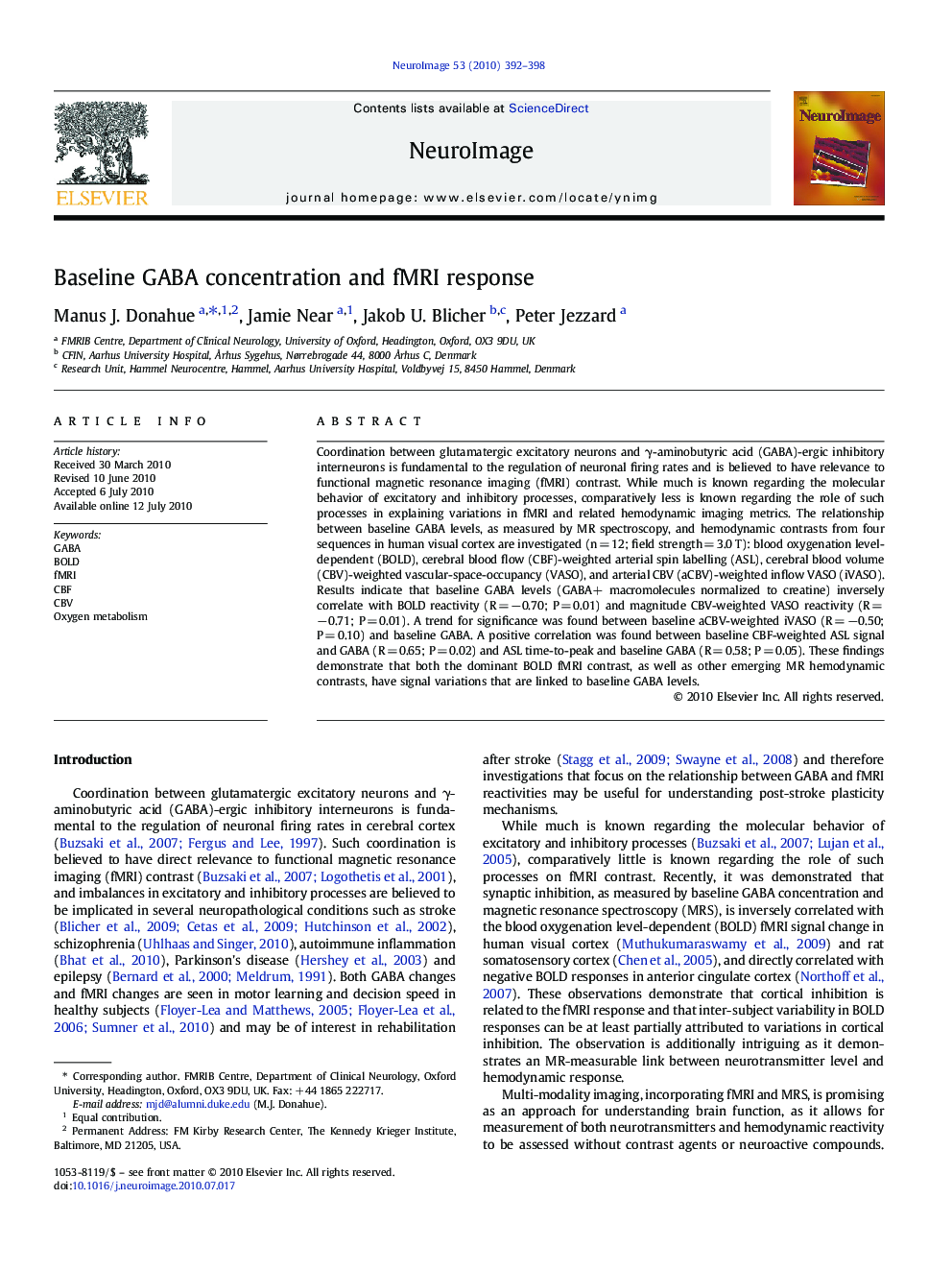| Article ID | Journal | Published Year | Pages | File Type |
|---|---|---|---|---|
| 3072256 | NeuroImage | 2010 | 7 Pages |
Coordination between glutamatergic excitatory neurons and γ-aminobutyric acid (GABA)-ergic inhibitory interneurons is fundamental to the regulation of neuronal firing rates and is believed to have relevance to functional magnetic resonance imaging (fMRI) contrast. While much is known regarding the molecular behavior of excitatory and inhibitory processes, comparatively less is known regarding the role of such processes in explaining variations in fMRI and related hemodynamic imaging metrics. The relationship between baseline GABA levels, as measured by MR spectroscopy, and hemodynamic contrasts from four sequences in human visual cortex are investigated (n = 12; field strength = 3.0 T): blood oxygenation level-dependent (BOLD), cerebral blood flow (CBF)-weighted arterial spin labelling (ASL), cerebral blood volume (CBV)-weighted vascular-space-occupancy (VASO), and arterial CBV (aCBV)-weighted inflow VASO (iVASO). Results indicate that baseline GABA levels (GABA+ macromolecules normalized to creatine) inversely correlate with BOLD reactivity (R = −0.70; P = 0.01) and magnitude CBV-weighted VASO reactivity (R = −0.71; P = 0.01). A trend for significance was found between baseline aCBV-weighted iVASO (R = −0.50; P = 0.10) and baseline GABA. A positive correlation was found between baseline CBF-weighted ASL signal and GABA (R = 0.65; P = 0.02) and ASL time-to-peak and baseline GABA (R = 0.58; P = 0.05). These findings demonstrate that both the dominant BOLD fMRI contrast, as well as other emerging MR hemodynamic contrasts, have signal variations that are linked to baseline GABA levels.
Research highlight►GABA concentration inversely correlates with fMRI response in visual cortex ►GABA concentration inversely correlates with baseline CBV in visual cortex ►GABA concentration inversely correlates with CBV reactivity in visual cortex ►GABA concentration positively correlates with CBFw-ASL contrast in visual cortex.
